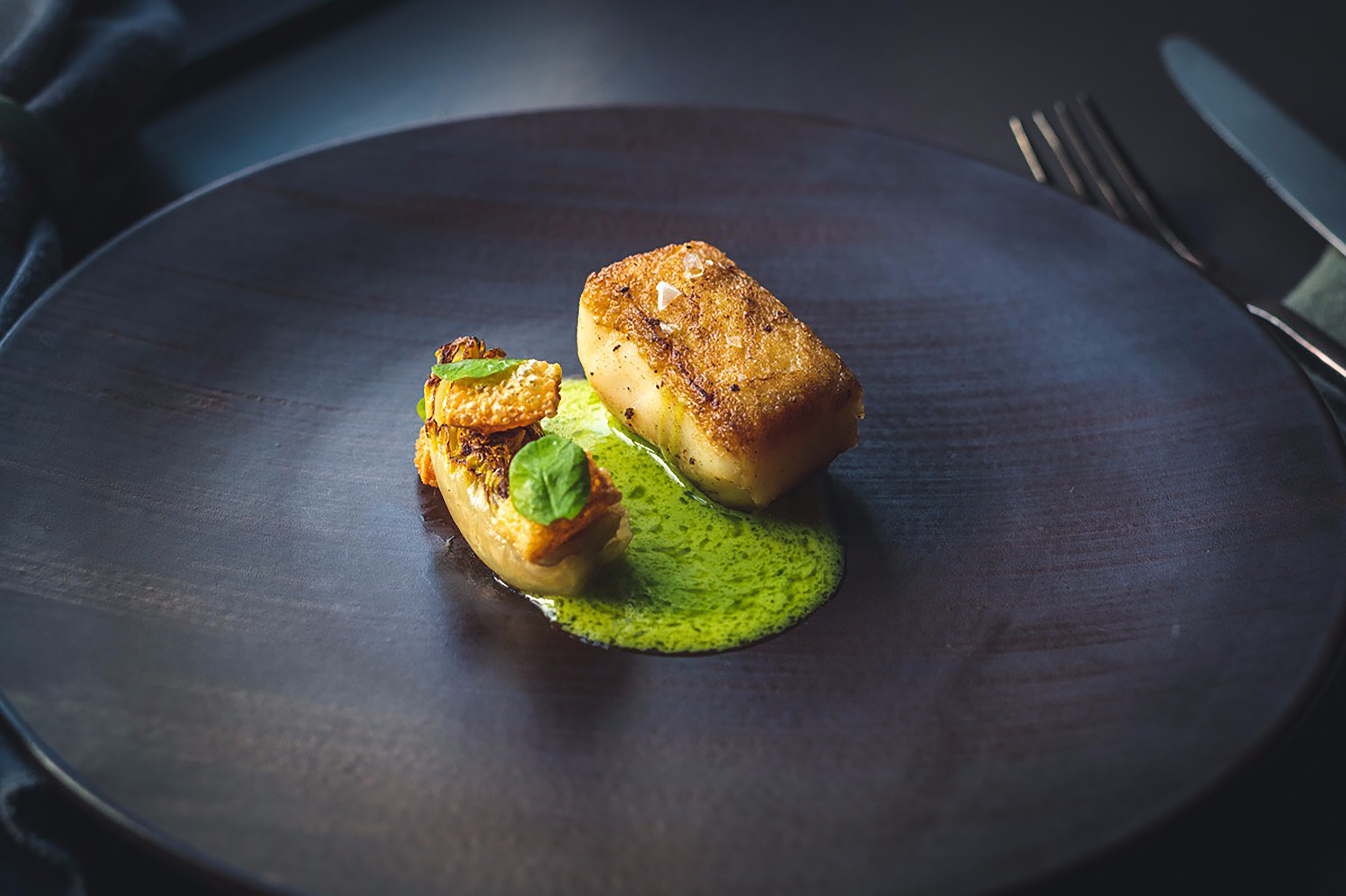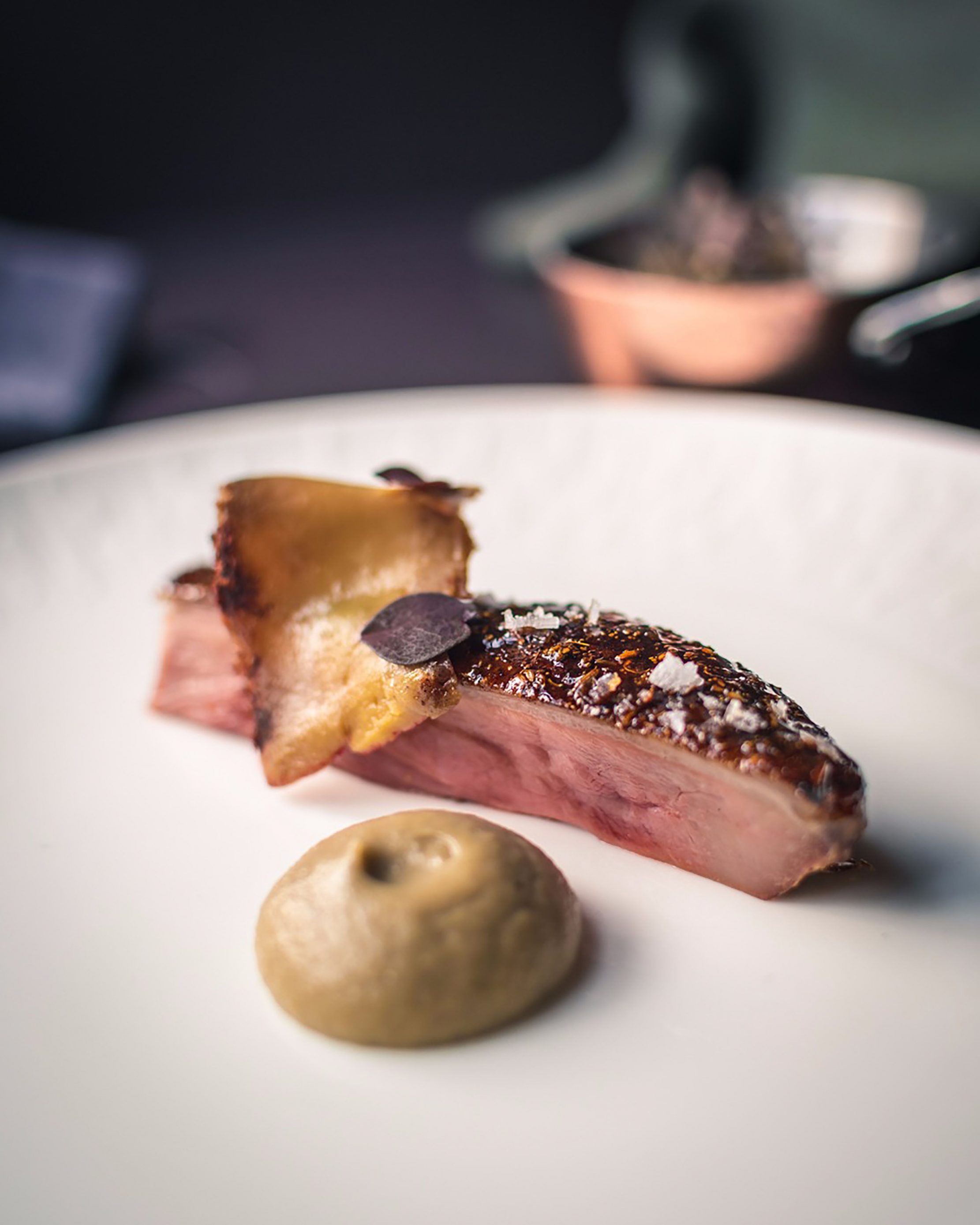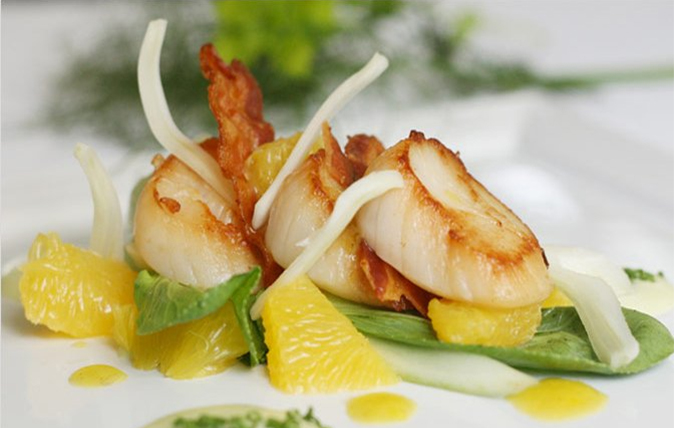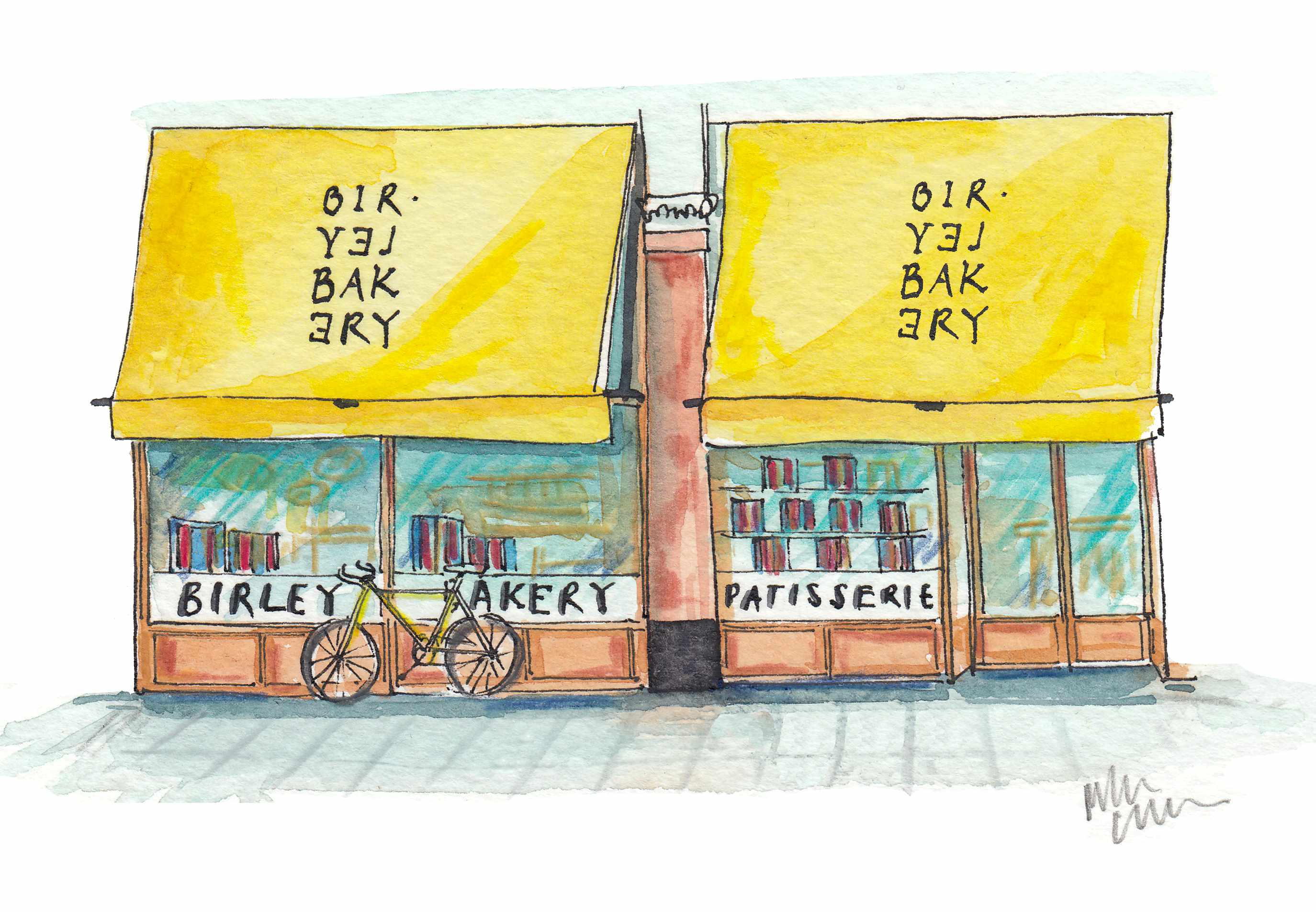HOME, Leeds: A restaurant with authenticity, passion and homespun touches — and how to make one of their finest dishes
Mary Miers visited HOME, a Leeds restaurant with authenticity, passion and homespun touches — and also found out how to make one of their finest dishes.


I confess I arrived at HOME in a bad mood. It’s in a pedestrianised street and I was in a car, I was late and the absence of a sign over the pedimented doorway added to my confusion. Once I’d climbed several flights up a dark painted stairway and arrived in the stylish reception/bar, however, my mood changed to one of intrigued anticipation.
HOME has made its home in a former Victorian fishmarket that had served as a dance hall, Punk Rock venue, Irish club and Indian restaurant before lying derelict for 14 years. In its current incarnation, dark painted panels contrast with thick white linen beneath a galaxy of lanterns and soon I was sitting at one of the big, square tables, soothed by a glass in hand and the company of my godson nephew. This is the perfect place to introduce the younger generation to relaxed, rather than stuffy, fine dining — though it was still a big step up from what Alex had originally been expecting: he’d been under the impression that I’d invited him for a meal at the other eaterie in Leeds called Home, a Chinese restaurant near the University where he’s studying.

Months of student life — and the inevitable flirtation with veganism — found him pretty hungry; as the 10-course tasting menu was placed before us, along with the first of many ‘table snacks’ — a small square of smoked eel doused in smoked eel broth on a sesame cracker — I could see all his ethical worries flying out the window.
Not that he need have questioned the ecological credentials of HOME’s founders, Michelin-starred Head Chef Mark Owens and Masterchef semi-finalist Elizabeth Cottam, sponsor of various charities and waste distribution initiatives. The aim of their entirely self-funded restaurant is to ‘reimagine familiar flavours using amazing local produce’ — such as Harewood venison with foraged juniper — and they have dedicated much time to developing their own take on classic British dishes, refining and updating but still cooking in traditional ways.
The menu changes with the seasons and, it being Spring, the dishes were full of earthy flavours and slow-cooked meats; just reading ‘The Season’ menu for this and the forthcoming months was a sensual pleasure. We proceeded to work our way through a succession of intricately assembled dishes, each floating on a large, pristine platter — I balk at the number of dishwasher cycles that each evening’s dining must require.
A braised ‘doughnut’ of Yorkshire pork on a bed of rhubarb puree was followed by poached cod in burnt butter with red grapes. Then came lavender smoked duck and pistachio terrine with blood orange topped with cured and dried duck hearts; salsify and wild mushroom truffle; a delicious black garlic and dripping brioche with salted toffee butter (they churn their own butter at HOME); smoked salmon with stuffed artichokes and a caviar crème sauce with artichoke foam; an 100-day-dry-aged sirloin-with-celeriac-poached-in-beef-fat-with-braised-cheek-bone-marrow choux, wrapped in bone marrow mash and burnt pine nuts….
You get the picture: all quite complex sounding and poetic, but then HOME is all about creativity and culinary craftsmanship and the local authenticity, passion and homespun touches that it prides prevent it feeling too pretentious. Each dish was introduced by an attentive waiter with a discourse that I was pleased to find engaging rather than annoying, and which provided plenty to discuss as we worked our way through the menu.
Sign up for the Country Life Newsletter
Exquisite houses, the beauty of Nature, and how to get the most from your life, straight to your inbox.

And work our way through we did, on through to the cheese course, an apple tart tatin with caramelized onions, a warm curd with raspberry mallow lemon meringue pie and, at the finish line, a delicious honey cake with fennel and yoghurt parfait. At each stage of this ‘carefully curated tasting menu’, we were plied with a glass from the ‘Signature wine flight’ (those wishing to try HOME’s selection of vintage and rare wines can opt for the more expensive ‘Premium wine flight’). The most memorable was the Australian Esoterico served with the smoked duck terrine — an amber liquid with a bouquet of blood orange, mandarin, cardamom and star anise.
This is not the place for a slap-up, hearty meal. Rather, it offers a fine feast of delectable morsels beautifully presented as works of art. Each requires just a few mouthfuls, but that’s the point of a multi-course tasting menu and this one is certainly generous enough to leave you feeling happily replete. Whether you call West Yorkshire home or are, like I was, merely visiting, a meal at the sophisticated new restaurant HOME is well worth the detour.
The 10-dish tasting menu at HOME is served Wednesday to Sunday, £65-90 per person. Condensed lunchtime and weekday evening selection costs £45-55 per person – see www.homeleeds.co.uk for more details.
A HOME recipe to make at home: Halibut with garden peas and baby gem
Ingredients (serves 4)
For the halibut
- 600g halibut loin (skinned)
- 75g salt
- 100g butter
- 50g lemon juice
- salt
For the pea velouté
- 300g peas frozen
- 1 litre water
- salt
For the dill oil
- 250ml oil
- 1 bunch dill
For the pickled Shemiji mushrooms
- 150g white wine
- 150g white wine vinegar
- 150g sugar
- 1 star anise
- 1 pack white Shemiji mushrooms (trimmed)
For the braised baby gem lettuce
- 300g veg stock
- 125g butter
- 2 baby gem heads
For the garnish
- bronze fennel
Method
A lot of the preparation for this can be done – and needs to be done – before, starting with curing the halibut a day beforehand. Place the halibut in salt and cure for 30 minutes. Wash off the salt and pat dry, then wrap the fish in a j-cloth in the fridge for 24 hours to firm up. After 24 hours, portion the fish into four 150g pieces.
Making the dill oil is a case of blending together the oil and dill, then straining the mixture through a cloth over a bowl. Once you've extracted the dill oil you can discard the herb pulp.
To make the pickled mushroom put all the ingredients except the mushrooms into a pan and bring to the boil. Chill the pickling liquid, then add the mushrooms.
For the baby gem make a braising stock by simmering the vegetable stock and butter and season to taste. Then halve the baby gem and poach for 5 minutes until tender.
To make the pea velouté, bring the water to the boil and add the peas. Boil for two minutes then blend with 300ml of the water and adjust the seasoning to taste.
To roast the halibut, put a non-stick pan on the heat until smoking. Add the fish, skin side down, and roast for 1 minute until golden. Add the butter and roast for 1 more minute.
Add lemon juice, flip the fish and then take off the heat. Baste and rest for 1 minute before serving.
To plate up, combine 50ml of dill oil with 300ml of the pea veloute and pour over the fish.

The 10 best restaurants in Yorkshire
Country Life's choice of the very best restaurants and places to eat throughout Yorkshire.
Mary Miers is a hugely experienced writer on art and architecture, and a former Fine Arts Editor of Country Life. Mary joined the team after running Scotland’s Buildings at Risk Register. She lived in 15 different homes across several countries while she was growing up, and for a while commuted to London from Scotland each week. She is also the author of seven books.
-
 'That’s the real recipe for creating emotion': Birley Bakery's Vincent Zanardi's consuming passions
'That’s the real recipe for creating emotion': Birley Bakery's Vincent Zanardi's consuming passionsVincent Zanardi reveals the present from his grandfather that he'd never sell and his most memorable meal.
By Rosie Paterson
-
 The Business Class product that spawned a generation of knock-offs: What it’s like to fly in Qatar Airways’ Qsuite cabin
The Business Class product that spawned a generation of knock-offs: What it’s like to fly in Qatar Airways’ Qsuite cabinQatar Airways’ Qsuite cabin has been setting the standard for Business Class travel since it was introduced in 2017.
By Rosie Paterson